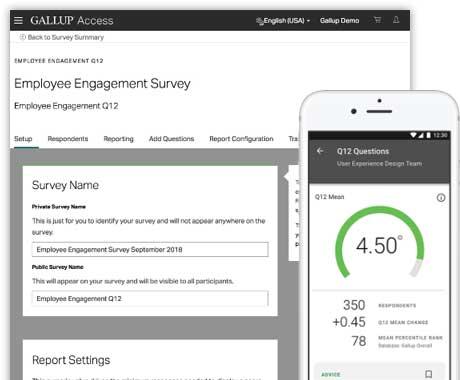Story Highlights
- Companies should invest in employees like they're real assets
- Read how GGWA winners link their people strategies to business outcomes
Go to any business' website and you'll probably find a career page that says, "Employees are our greatest asset." But the truth is, people are one of the largest expenses in any organization.
On average, U.S. companies are running at 33% efficiency. That's according to Gallup's employee engagement metric, which can be used as a yardstick of human asset efficiency. And the U.S. average is comparatively positive -- only 15% of the world's workers are engaged and reaching their full potential at work.
Evidently, most people really aren't much of an asset, but then again, they aren't being invested in like the resource they are, either. Fixing that problem is a bigger issue than changing how you label employees and their value.
It requires implementing a strategy of employee development as a means to measure business outcomes.
In early 2019, we celebrated 40 organizations -- the Gallup Great Workplace Award winners -- who use that approach and are running at 70% or higher engagement rates.
Because engagement is linked to greater productivity, retention and sales -- even safety -- those GGWA winners' employees are genuine assets. Those companies created assets out of employees by very intentionally linking employee engagement to business outcomes.
Here's how they do it:
Implement a strategic tool that is proven by metrics.
GGWA leaders behave differently from other leaders. First, and fundamentally, they believe that engagement is a strategic tool that can and must be proven by metrics.
Their strategy deliberately links worker engagement to team performance to company purpose to business outcomes.
GGWA leaders' strategies differ from company to company, of course, but every leader shares these attributes:
- They reject the idea of engagement for engagement's sake.
- They set high expectations for managers to simultaneously deliver results and engage their teams.
- They connect engagement with those the employees serve (customers, members, patients, etc.).
- They have formal, intentional programs for employee development.
- They link each employee's job to the delivery of the organization's purpose.
For example, one GGWA winner said, "Engagement is so critical to our business success that it is woven into the very foundation of ... our service values, [which are] our competitive advantage, our differentiator." The most engaged business units in the company are the ones most connected to the organization's service values, that have direct operating income 26.7 points above or higher than the goal, and a 47.3-percentage-point lower manager turnover rate than the goal, among other metrics.
Another GGWA winner, with a 17% CAGR, found that sales growth is 10 percentage points higher among engaged and talented salespeople in one unit, at 27%, compared with 17% in a group who are talented but not highly engaged. When leadership of one team discovered that many people felt they weren't doing what they do best every day, it set aside an hour a week to focus on a topic of employees' choosing. Four years later, the group had produced multiple patents, several product refreshes, and a much-enhanced skill set.
Use employee engagement as a means to an end.
All of these companies believe in engagement as a means to an end, and that end is a measurable business outcome. The outcomes differ among companies -- for some it's sales growth, for others it's lives saved -- but those outcomes are always guided by the purpose of the organization.
Purpose, however, is a little abstract. For instance, the purpose of one highly engaged GGWA hospital is to create a healthier community. The purpose of a highly engaged GGWA financial services firm is to increase the financial wellbeing of customers. Purpose may be more felt than measured -- but in every case, GGWA winners center theirs around the customer.
Purpose may be more felt than measured -- but in every case, GGWA winners center theirs around the customer.
Ultimately, profit indicates the success of an engagement strategy. Engaged employees think of more efficient ways to work, find opportunities to be more productive, generate positive energy on their teams and find new ways to delight customers. That's a financial benefit that businesses can't get any other way, and it's the way to outperform your competition.
That's why engaged employees are an asset -- in the truest sense of the word.
But turning employees into assets requires investment in their engagement, as is the case with any other resource that generates profit. That investment can be maximized if it's tied to business outcomes by way of performance and purpose.
Fortunately, your people want that investment. A well-conceived engagement strategy helps people do great work, add value, and feel like they are a part of the organization's success.
That's an incredibly rewarding way to spend your work life -- and people who feel that way truly are a company's greatest assets.
Gallup can help you improve your business outcomes by implementing the right kind of people strategy:
- Explore our learning and survey platform, Gallup Access, that gives managers best practices on employee engagement, development and performance.
- Learn more about our workplace learning and engagement programs that empower people to be effective in their roles.
- Download our State of the American Workplace report to gain an in-depth perspective on what matters most to employees in a role and company.





